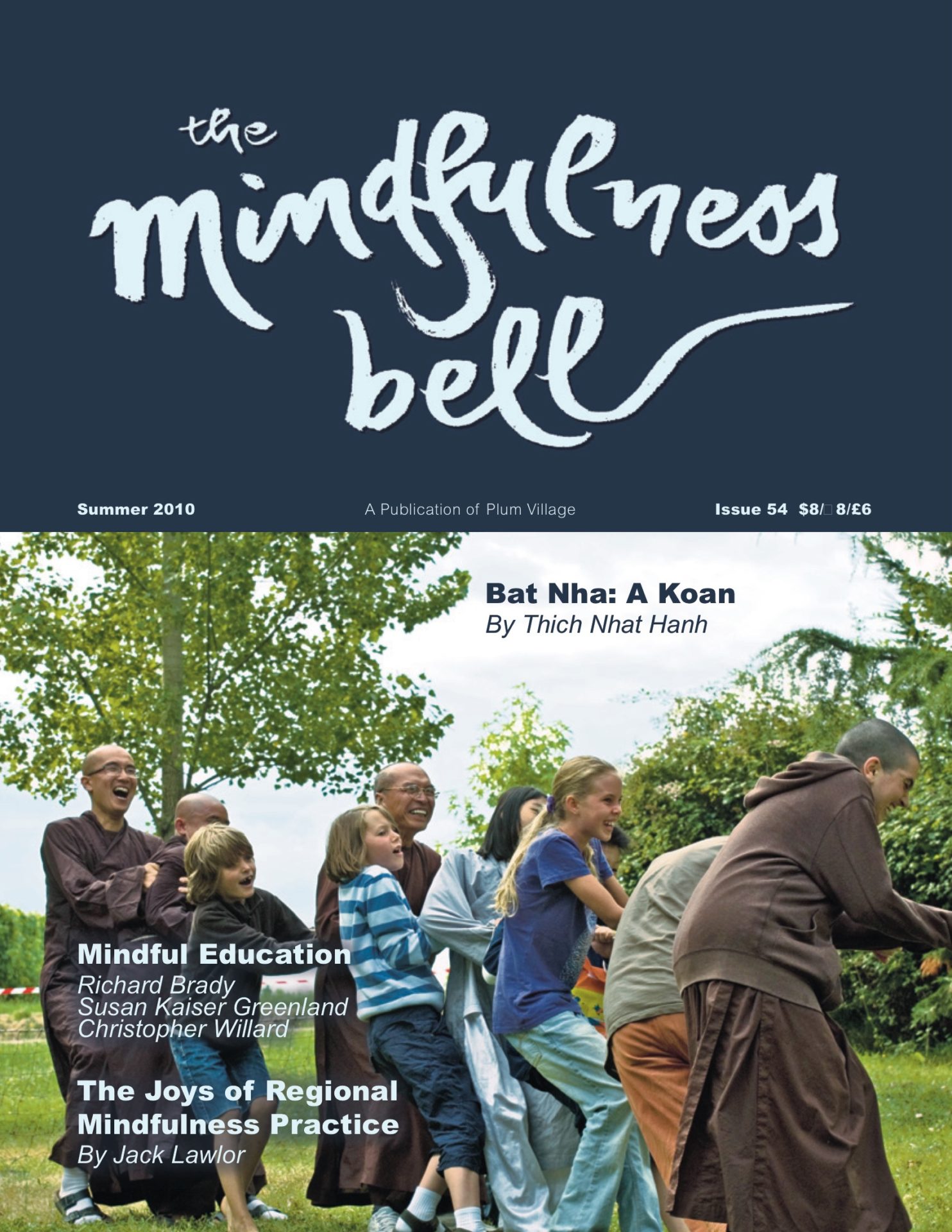Dear Thay, dear Sangha,
When I was young I wanted to be a teacher. I held summer classes for the neighborhood kids, complete with handouts, recess, and homework (and they tolerated it!). Later I set aside that dream, believing I lacked the authority and knowledge to teach. But having taught meditation for the past year, I’ve learned that compassion and mindfulness are the most powerful teaching tools—much more powerful than knowledge.
This summer I’ll be teaching creative writing to children.
Dear Thay, dear Sangha,
When I was young I wanted to be a teacher. I held summer classes for the neighborhood kids, complete with handouts, recess, and homework (and they tolerated it!). Later I set aside that dream, believing I lacked the authority and knowledge to teach. But having taught meditation for the past year, I’ve learned that compassion and mindfulness are the most powerful teaching tools—much more powerful than knowledge.
This summer I’ll be teaching creative writing to children. To prepare for the job I observed a young teacher at the writing school. He gave his undivided attention and encouragement to each six-year-old budding writer. I realized that to teach, we don’t need to know everything about our subject. We only need to love the topic and give the class our full, caring attention. In mutual exchange, we discover and learn with our students. Similarly, if we love eating our meals with mindfulness, love being fully present with each footstep, we’ll naturally share this beloved practice and exchange discoveries with friends who practice too.
With its theme of Mindful Education, this issue offers a wonderful collection of stories, photos, activities, and resources on teaching and learning. This issue isn’t just for classroom professors and students. It’s for all of us. As students of Thay, of the Buddha, we are studying the way of awareness and always teaching by example. These stories show us how we might bring mindful practices not just to schools, but also to our families, friends, and co-workers—the people we teach every day with our actions, our words, our presence.
One of my Sangha mentors, Glen Schneider, shared an insight he learned from Thay: “What should a student expect from a teacher? The student should expect that the teacher is a free person, free from craving, fear, and despair. What should a teacher expect from a student? You should expect from your students their transformation, their healing, their freedom.” Such simple, profound expectations can alter the course of an education, a relationship, a life.
Instead of a Dharma talk from Thay, in this issue we include his essay, Bat Nha: A Koan. Thay shines a penetrating light on the coercion and violence that happened at Prajna Temple in Vietnam. Our teacher guides us to cultivate insight by looking compassionately into the hearts of others, and invites us into a fearless practice of interbeing.
May you be peaceful and at ease, enjoying your breathing as you read this issue of the Mindfulness Bell. May these stories enrich your practice and awaken your bodhicitta, your mind of love.
Natascha
Benevolent Respect of the Heart

